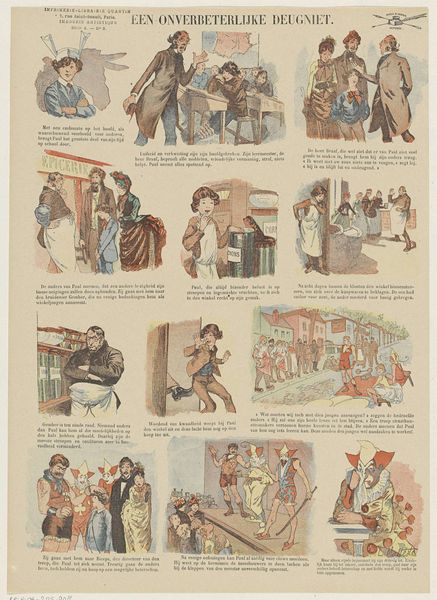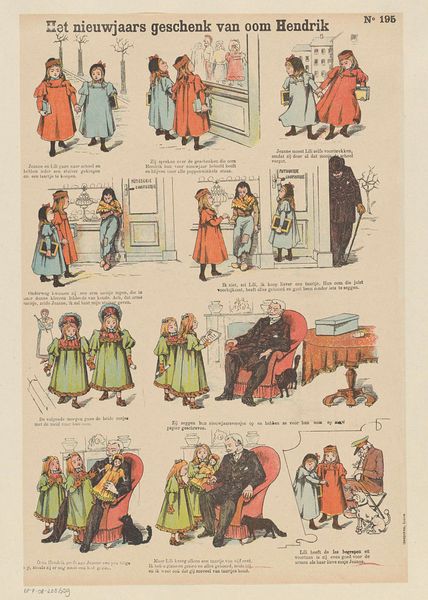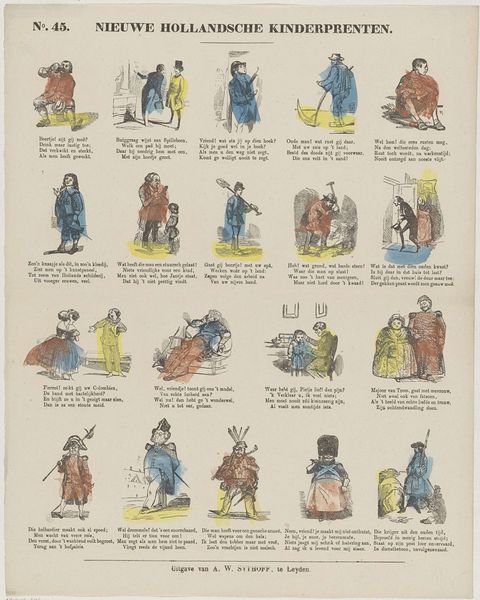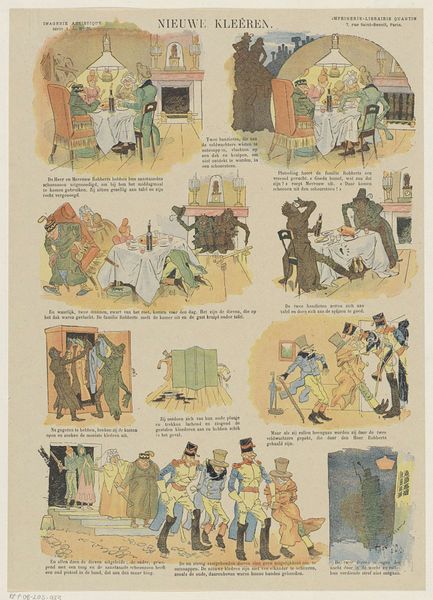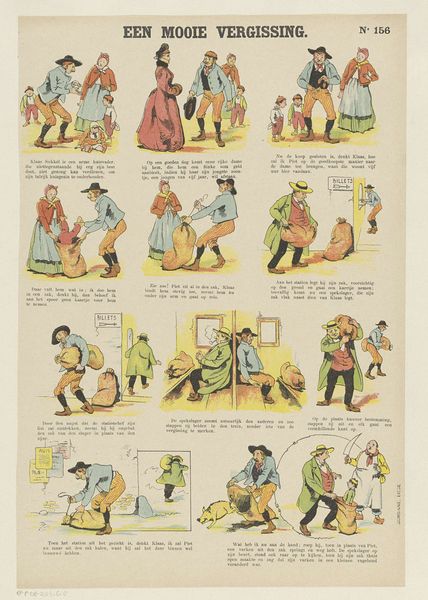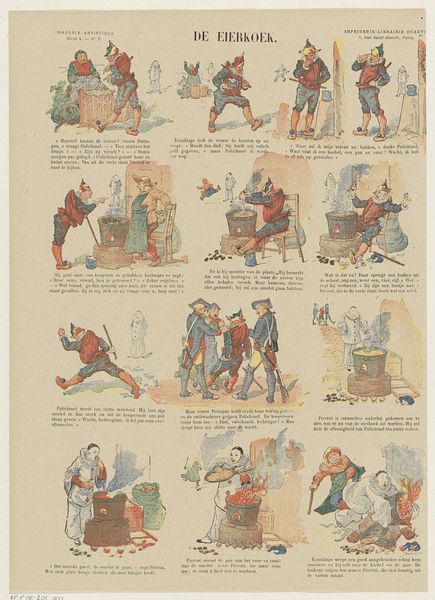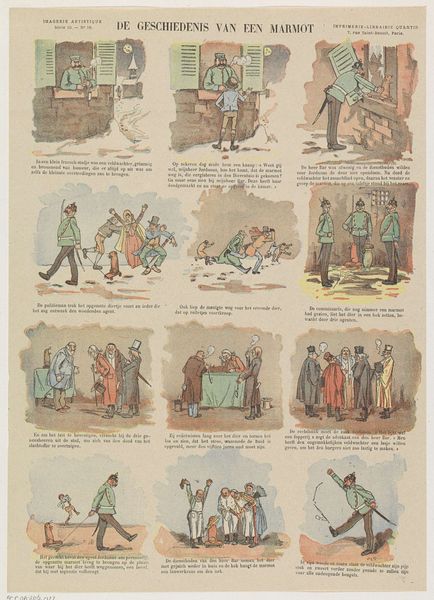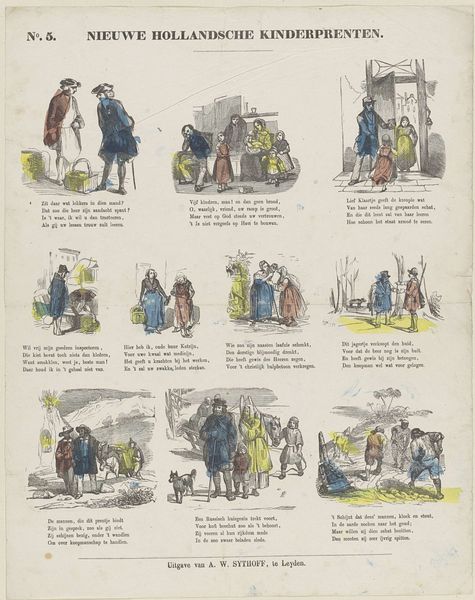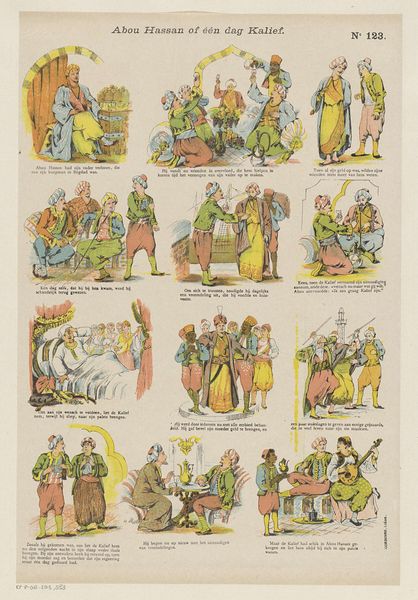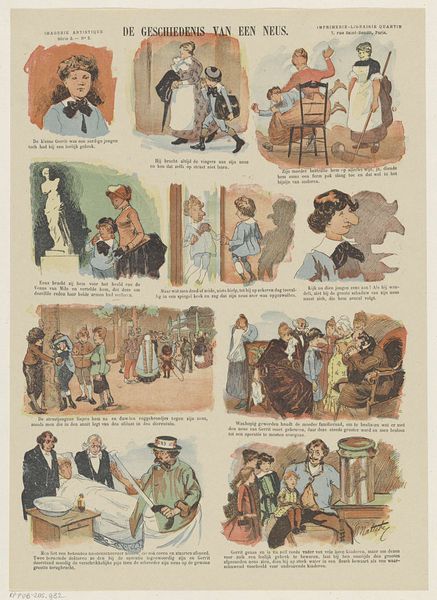
Dimensions: height 369 mm, width 266 mm
Copyright: Rijks Museum: Open Domain
Editor: So, here we have “De ongehoorzame Leendert,” created sometime between 1876 and 1890. It appears to be a print with ink and watercolor, showing a series of vignettes. The paper itself looks quite aged. What jumps out at me is how each panel illustrates a different mischief, almost like a comic strip. How do you interpret this work? Curator: This piece seems less about high art and more about the *making* of narratives, wouldn’t you agree? Consider the mass production of prints during this period. This piece likely circulated widely. I am interested in how its creation, from the drawing to the printmaking process, democratized storytelling. What effect might such dissemination of a printed narrative have had on its original audience? Editor: That's an interesting point. I hadn’t thought about it in terms of mass production. So, are you suggesting the medium is as important as the message of the disobedient boy? Curator: Exactly! Think about the labour involved: the artist, the printmakers, the distributors. This wasn't just an image; it was a commodity, made possible by evolving industrial processes and designed for a specific consumption. Look at how the artist has efficiently rendered scenes in ink. Why use these faster print-making techniques, instead of more refined media? Editor: I see what you mean. The narrative itself becomes almost secondary to the material conditions that allowed for its distribution and consumption. It's less about Leendert’s disobedience and more about how this artwork became accessible. Curator: Precisely. Consider how it challenges our traditional notion of what constitutes 'art.' It compels us to explore the complex relationship between art, labor, and everyday life, rather than just the aesthetic qualities of a simple line drawing. What social classes had access to it? How does that accessibility impact your understanding of art from this era? Editor: That’s a really insightful perspective. I’ll definitely consider this artwork, and others, differently now, thinking about the material context and the labor involved. Thanks for making me see it differently. Curator: You’re very welcome! Considering material and mode of dissemination allows us new insight to traditional understandings of the creation and consumption of images.
Comments
No comments
Be the first to comment and join the conversation on the ultimate creative platform.
